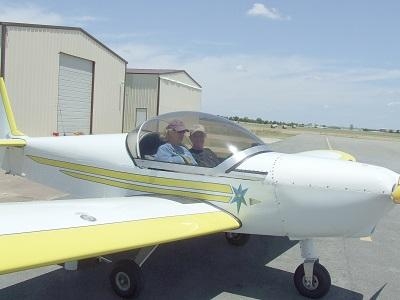Fri, Dec 19, 2014
Many Aircraft That Are Ideal For Light Sport Operation Carry An Experimental Airworthiness Certificate; But What Does That Mean?
The most common experimental airworthiness certificate is the one that is issued to homebuilt aircraft or experimental light sport airplanes. However, this is not the only type of experimental certification, and it’s important to read the fine print on the airworthiness certificate and to review operating limitations for the aircraft before considering ownership.

The FAA issues two types of airworthiness certificates: a standard certificate and a special certificate. The standard certificate is issued to an aircraft that is built in accordance with FAA regulations. Under today’s regulations, these would be FAR 23 or FAR 25. However, there many airplanes out there holding airworthiness certificates from other FAA standards issued in days gone by that are still valid.
An experimental airplane carries a special airworthiness certificate. The special airworthiness certificate is issued for aircraft that have not shown compliance with FAA design, testing, and manufacturing standards. An example of these would be an experimental-amateur built aircraft and a special-light sport airplane. However, not all aircraft with an experimental airworthiness certificate are the same.
Experimental airworthiness certificates actually come in 9 subdivisions referred to as “purpose.” Each one of these purpose subdivisions will carry its own operating limitations, some of which can be extremely limiting resulting in the airplane not being practical for recreational flying. These experimental purpose subdivisions are:
- Research and development
- Showing compliance with regulations
- Crew training
- Exhibition
- Air racing
- Market surveys
- Operating amateur-built
- Operating primary category kit-built aircraft
- Operating light-sport aircraft
An airplane issued a special airworthiness certificate is also issued operating limitations that are created by the FAA and are considered part of the airworthiness certificate itself. The operating limitations of the different experimental purpose categories are quite different from each other. Operating limitations issued with a special airworthiness certificate may carry numerous limitations that are not found in the regulations. These limitations and stipulations not only apply to the airplane, they also may apply to the pilot operating the aircraft.
If you are considering ownership of an airplane with an experimental airworthiness certificate, make sure you understand the purpose classification and carefully read the operating limitations.
(Image of experimental Zodiac 601 XL-B from file)
More News
Terminal Radar Service Area Airspace surrounding designated airports wherein ATC provides radar vectoring, sequencing, and separation on a full-time basis for all IFR and participa>[...]
Very High Frequency (VHF) The frequency band between 30 and 300 MHz. Portions of this band, 108 to 118 MHz, are used for certain NAVAIDs; 118 to 136 MHz are used for civil air/grou>[...]
“From approximately November 2021 through January 2022, Britton-Harr, acting on behalf of AeroVanti, entered into lease-purchase agreements for five Piaggio-manufactured airc>[...]
Also: Virtual FLRAA Prototype, IFR-Capable Autonomous A/C, NS-32 Crew, Golden Dome Missile Defense Bombardier announced that the first production Global 8000 successfully completed>[...]
Aero Linx: The 1-26 Association (Schweizer) The Association’s goal is to foster the helpfulness, the camaraderie, and the opportunity for head-to-head competition that is fou>[...]
 ANN's Daily Aero-Term (05.29.25): Terminal Radar Service Area
ANN's Daily Aero-Term (05.29.25): Terminal Radar Service Area ANN's Daily Aero-Term (05.30.25): Very High Frequency (VHF)
ANN's Daily Aero-Term (05.30.25): Very High Frequency (VHF) Aero-News: Quote of the Day (05.30.25)
Aero-News: Quote of the Day (05.30.25) Airborne 05.23.25: Global 8000, Qatar B747 Accepted, Aviation Merit Badge
Airborne 05.23.25: Global 8000, Qatar B747 Accepted, Aviation Merit Badge ANN's Daily Aero-Linx (05.30.25)
ANN's Daily Aero-Linx (05.30.25)



